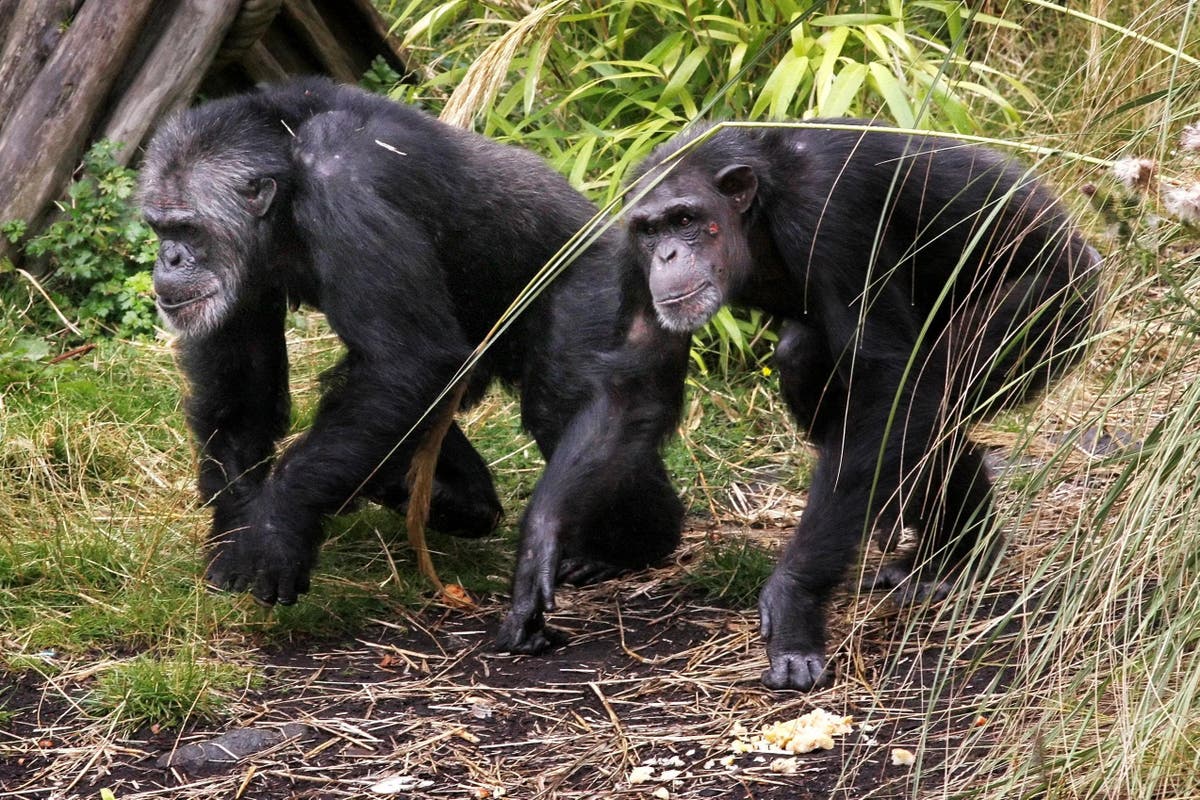The rotating shoulders and lengthening elbows that permit people to achieve a excessive shelf or throw a ball might have first developed as a pure braking system for our primate ancestors, a research suggests.
Based on the researchers, early people wanted the actions to gradual their descent out of timber so they might climb down with out dying.
When early people left forests for the grassy savanna, the researchers say, their versatile appendages have been important for gathering meals and deploying instruments for searching and defence.
Researchers from Dartmouth Faculty within the USA used sports-analysis and statistical software program to check movies and still-frames they took of chimpanzees and small monkeys known as mangabeys climbing within the wild.
They discovered that the animals climb timber equally, with shoulders and elbows principally bent near the physique.
Nonetheless, when climbing down chimpanzees prolonged their arms above their heads to carry onto branches like an individual happening a ladder as their higher weight pulled them downward bottom-first.
Luke Fannin, first creator of the research and a graduate scholar in Dartmouth’s Ecology, Evolution, Setting and Society programme, stated the findings are among the many first to establish the importance of “downclimbing” within the evolution of apes and early people.
He added: “Our research broaches the thought of downclimbing as an undervalued, but extremely essential issue within the diverging anatomical variations between monkeys and apes that will finally manifest in people.
“Downclimbing represented such a major bodily problem given the dimensions of apes and early people that their morphology would have responded via pure choice due to the chance of falls.”
Co-author Jeremy DeSilva, professor and chairman of anthropology at Dartmouth, stated: “Our discipline has considered apes climbing up timber for a very long time — what was primarily absent from the literature was any deal with them getting out of a tree. We’ve been ignoring the second half of this behaviour.
“The primary apes developed 20 million years in the past within the form of dispersed forests the place they’d go up a tree to get their meals, then come again down to maneuver on to the following tree.
Our research broaches the thought of downclimbing as an undervalued, but extremely essential issue within the diverging anatomical variations between monkeys and apes that will finally manifest in people
Luke Fannin, First creator
“Getting out of a tree presents all types of latest challenges. Massive apes can’t afford to fall as a result of it may kill or badly injure them.
“Pure choice would have favoured these anatomies that allowed them to descend safely.”
The researchers recommend that versatile shoulders and elbows handed on from ancestral apes would have allowed early people similar to Australopithecus to climb timber at night time for security and are available down within the daylight unscathed.
As soon as Homo erectus may use hearth to guard itself from nocturnal predators, the human type took on broader shoulders able to a 90-degree angle that made them wonderful pictures with a spear.
The researchers additionally studied the anatomical construction of chimp and mangabey arms utilizing skeletal collections at Harvard College and The Ohio State College, respectively.
They discovered that, like folks, chimpanzees have a shallow ball-and-socket shoulder that -while extra simply dislocated – permits for a higher vary of motion.
Additionally like people, they’ll totally prolong their arms because of the diminished size of the bone simply behind the elbow generally known as the olecranon course of.
Mangabeys and different monkeys are constructed extra like quadrupedal animals similar to cats and canine, with deep pear-shaped shoulder sockets and elbows with a protruding olecranon course of that make the joint resemble the letter L.
Though these joints are extra secure, they’ve a way more restricted flexibility and vary of motion.
The analysis is revealed within the Royal Society Open Science journal.









